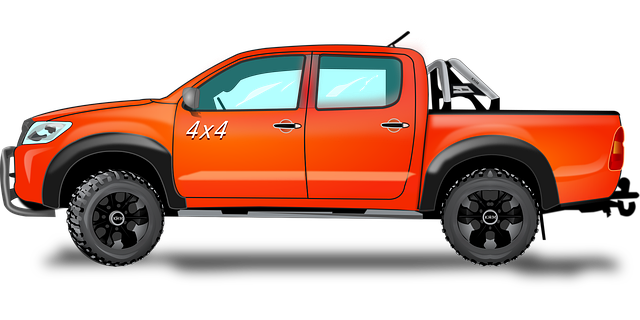The drum kit in Edinburg, Tx, consists of 4 key parts: bass drum (low, powerful beat), snare drum (sharp cracking sound), toms (various sizes for complex patterns), and cymbals (wide range of sounds for fills & effects). These 4×4 parts provide the rhythmic foundation for diverse music genres. The bass drum sets the tempo, while other components offer distinct playing techniques and sounds to create dynamic rhythms. Each part harmonizes to drive music forward in performances across various styles.
Drums, the heartbeat of music, are a vital instrument in any band or performance. This article explores the essence of drums, focusing on the 4×4 setup common in Edinburg, Tx. We’ll dissect the fundamental components: bass drum, snare drum, toms, and cymbals, each contributing uniquely to rhythm and sound dynamics. From the solid foundation provided by the bass to the crisp snaps of the snare and melodic variations offered by toms, we’ll uncover how these parts create a cohesive rhythmic experience. Additionally, we’ll delve into customization options, highlighting local experts who craft tailored drum setups for musicians in Edinburg, Tx.
- The Basic Structure: 4×4 Parts of a Drum Kit in Edinburgh, Tx
- – Explain the fundamental components of a standard drum kit, emphasizing the 4×4 configuration.
- – Describe each part in detail, including their functions and common names (e.g., bass drum, snare drum, toms, cymbals).
- The Bass Drum: Setting the Rhythmic Foundation
- – Focus on the role of the bass drum as the anchor of the kit.
- – Discuss its construction, playing techniques, and impact on creating a solid rhythmic base for other drums and percussion instruments.
The Basic Structure: 4×4 Parts of a Drum Kit in Edinburgh, Tx

The basic structure of a drum kit in Edinburgh, Tx, or anywhere else, is composed of four main parts: the bass drum, snare drum, toms, and cymbals.
1. Bass Drum: This is the largest drum and provides the low, powerful beat that forms the foundation of most rhythms. It’s typically played with a pedal that allows the drummer to control the sound with their foot, enabling continuous beats.
2. Snare Drum: Situated between the bass drum and cymbals, the snare drum produces a sharp, cracking sound due to its unique tension-headed design. It’s often used for accents and fills, adding emphasis and dynamism to the music.
3. Toms: Also known as tom-toms, these are additional drums that come in various sizes and are positioned either on top of or beside the snare drum. They offer a range of tones from low to high, allowing for complex rhythmic patterns and solos.
4. Cymbals: Cymbals come in different shapes and sizes and produce a wide array of sounds, from bright chimes to dark crashes. They’re used for creating fills, transitions, and dramatic effects, often playing a crucial role in defining the overall sound of a drum kit.
– Explain the fundamental components of a standard drum kit, emphasizing the 4×4 configuration.

A standard drum kit in 4×4 configuration forms the backbone of rhythmic expression for musicians across various genres. This setup comprises four main parts: the bass drum (often played with a pedal), two tom-toms (higher-pitched drums), and the snare drum, positioned at the front. Each part contributes to creating complex rhythms and beats, allowing drummers in Edinburg, Tx, to weave intricate musical tapestries. The 4×4 parts work in harmony, from the deep resonances of the bass drum to the crisp snares, enabling dynamic performances that drive music forward.
– Describe each part in detail, including their functions and common names (e.g., bass drum, snare drum, toms, cymbals).

The modern drum kit, a vibrant and essential component in music production, comprises four key parts: the 4×4 parts. These include the bass drum, renowned for its deep, resonating sound that anchors the rhythmic foundation; the snare drum, characterized by its crisp, staccato blast that provides a sharp, defining accent; toms, which are high-pitched drums often arranged in a stack, adding versatility and dynamism to beats; and cymbals, used for glistening, shimmering effects or powerful crashes that punctuate music. In Edinburg, Tx, these 4×4 parts form the backbone of rhythmic expression in countless genres, from rock and jazz to pop and blues.
The Bass Drum: Setting the Rhythmic Foundation

The bass drum, a vital component in any drumming setup, particularly in the 4×4 parts of Edinburg Tx, serves as the rhythmic cornerstone. Its deep and resonant sound sets the tempo and provides the foundational beat that drives music forward. Often played with great force and speed, the bass drum’s ability to produce both powerful thuds and precise rolls makes it a versatile instrument for countless musical genres and styles. Whether in rock, jazz, or percussion ensembles, the bass drum plays an indispensable role, ensuring every measure and beat resonates throughout the performance space.
– Focus on the role of the bass drum as the anchor of the kit.

The bass drum, often referred to as the anchor of the drum kit, plays a crucial role in 4×4 parts Edinburg Tx and beyond. Its deep, resonating sound provides a steady pulse that gives rhythm to every musical piece. This essential component is not merely a backdrop; it actively drives the energy and flow of music, whether it’s in a lively gig or a composed recording. The bass drum’s capability to generate such profound vibrations makes it a cornerstone of drumming, enabling musicians to create a solid foundation for both simple beats and complex rhythms.
– Discuss its construction, playing techniques, and impact on creating a solid rhythmic base for other drums and percussion instruments.

The drum set, often referred to as a 4×4 parts configuration in Edinburg, Tx, is a cornerstone of rhythmic expression in music. Its construction involves four main components: the bass drum, snare drum, toms, and cymbals. Each part plays a unique role in creating a solid rhythmic base, enabling other drums and percussion instruments to weave together into a harmonious symphony.
Playing techniques vary across these parts, from the deep, powerful strokes of the bass drum to the crisp, snappy sounds of the snare. Toms add dynamic layers with their varying sizes, while cymbals offer a wide range of percussive effects, from bright, cutting tones to soft, shimmering ones. Skilled drummers manipulate these components through foot pedals and hand sticks, creating intricate rhythms that drive and enhance music across genres.
The 4×4 configuration of a drum kit, as seen in the fundamental parts discussed, forms the backbone of rhythmic expression. From the solid bass drum anchoring the kit to the diverse range of toms and cymbals that add texture and flair, each component plays a crucial role in creating dynamic rhythms. Understanding these parts, as explored in our discussion on the 4×4 structure in Edinburgh, Tx, empowers musicians to harness the full potential of this versatile instrument. Whether for driving beats or intricate fills, the drum kit remains a staple across genres, offering endless possibilities for creative expression.



